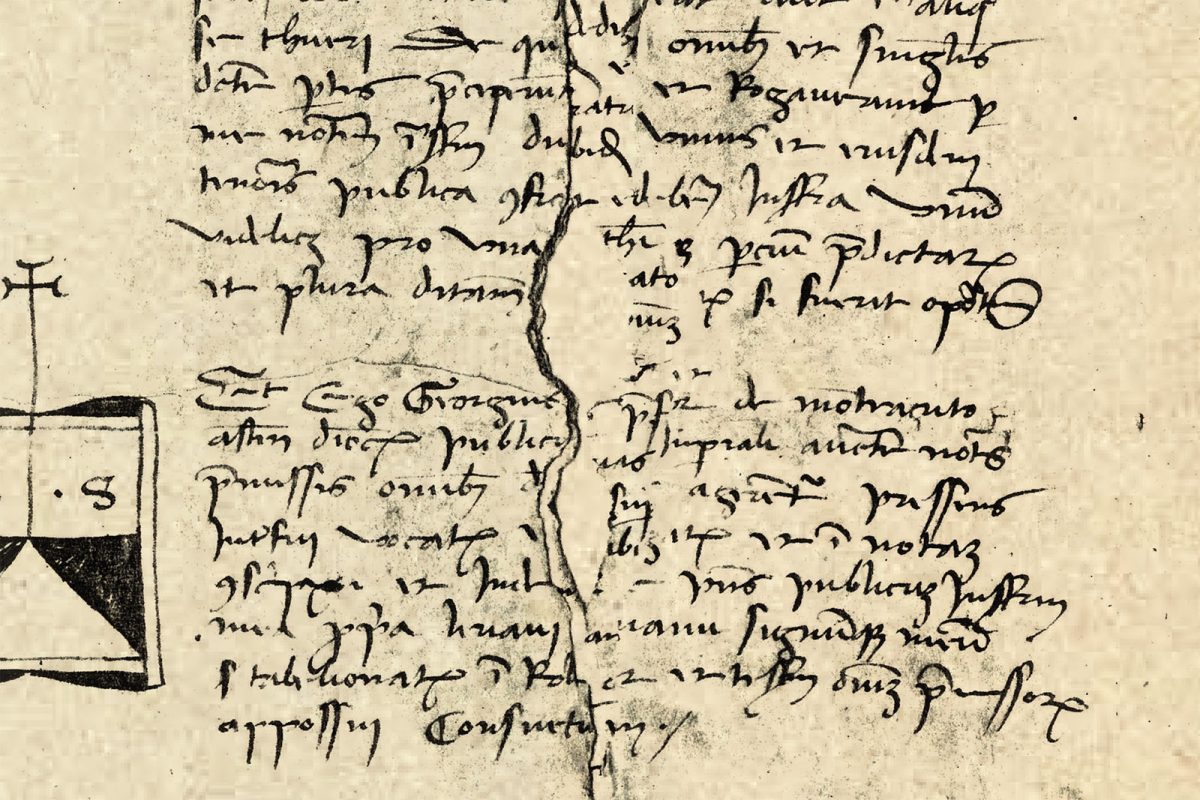The story
A path to discover, beginning with its name

Not that long ago it was thought that the name “Carretta” was derived from the Celtic root “car,” which means “stone,” thanks to a large bank of chalk that still stands a short distance from the entrance of the estate. Recent research in the medieval archives of the Baldassare Molino historian has instead revealed the existence of an Albese noblewoman (the “domina Careta”) who was a landowner in the municipality of Piobesi (“terre et prati scitam in finibus Pubbliciarum.”) The nobelwoman, also cited by her last name (Constanzi), appears in an act of sale of land in Piobesi d’Alba in 1353, found in the archives of the Counts of Roero di Guarene. In the act, it is referenced as the daughter of the Albese nobleman, Ruffino Capre, and the widow of the nobleman, Manuele Constanzi, from who she kept her last name. Another act, written two decades earlier in 1334, cites some the “heirs of Careta Constanzi,” presumably the grandmother of our “domina” Carretta.
From this and other documented references, it seems evidently apparent that the estate actually took its name from the noblewoman who was the first owner.

November 28, 1467: the start of Tenuta Carretta’s story
It is but a contract granting sharecropping drafted the 28th of November 1467 from the notary Giorgio di Monteacuto (the current Monteu Roero) to be considered the true starting point of the history of the estate. In it, the then owner, Andrea Damiano, Piobesi’s lord, conceded to the Porrini brothers – Corrado, Giacomino and Pietrino – permission to work and cultivate (as well as harvest) his lands of “cassina Careta” for nine years.
An extraordinary document
It is a document of extraordinary value due to its wealth of detail. It even includes the obligations of the farmers undertaken for cultivation; regarding the vines, they had to diligently “putare” (prune), “agonzare” (fix), “et scarzorare” (prune), and do all that was necessary and appropriate according to the custom. However, the grapes of the vines of the Podio hills were still the property of the lord, without the impediment of anyone (salvo et reservato vites Podi Serre, de quibus se nil impedire teneantur et debeant”).

Podium Serrae (the Podio) is the vineyard of privilege
The act closes with a final declaration: while all the harvested grapes will be split in half, those of the vines on the hill of Podio (Podium Serrae) are reserved for the lord, without impediment on the part of anyone (“salvo et reservato vites Podi Serrae, de quibus se nil impedire teneantur et debeant”), it is a certificate of “ante litteram.” Unique in the history of Piedmont, and perhaps Italy, of the quality of the vineyard that to this day still dominates over other winery’s vineyards.
The passings of the property
In 1811, after 350 years, the property passed from the Marquis Damiano to the Count of Roero, who cultivated in for 120 years. In 1932, he gave the estate to the Veglia family of Turin. In 1985, the property finally passed to the Miroglio family from Alba, founders and owners of the textile group with the same name.